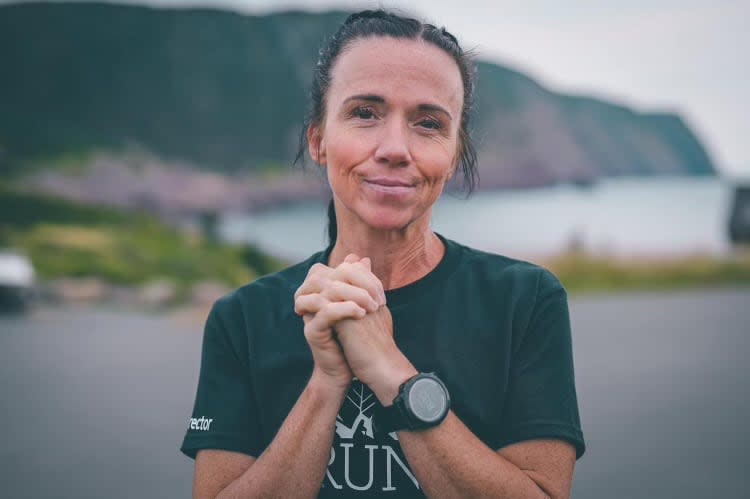
Tanya Joy has always used trail running as a way to deal with her mental health. She says getting out for a run is like medicine for her. (Submitted by David Sturge)
WARNING: This story contains details of suicide
It’s a hot and humid day in July. A day where most people would seek shelter and a cold drink. For Tanya Joy, it’s the perfect day for a trail run.
Joy says she needs to be on the trails. That’s because five years ago her brother, Jody, died by suicide.
Getting out for a run, even in the heat, is her way of processing that loss.
“I have mixed emotions.… My heart actually hurts,” said Joy.
“It’s sad that he didn’t get to live life longer and see more things and stuff. But at the same time, where I was five years ago to today is like night and day.”


Despite having severe PTSD and anxiety, Joy says running gives her the space to process her emotions and hopes she can help others find that too. (David Sturge)
Joy said she fell in love with running when she was a small child and ever since then she has used the sport — and nature — to find stability in her life.
“Running, to me, is something that I have full control over,” said Joy.
“It’s just a space that I can go out there and be me. You can cry, or you can scream or laugh and you have the space to do it. It’s very therapeutic.”
Joy struggled with her mental health long before the loss of her brother. She grew up with a parent who battled addiction. Later in life, she survived sexual assaults and the trauma of multiple miscarriages.
Joy said ,n 2007, after her first marriage ended, she spiralled into a mental health crisis.
“I remember going home and not wanting to live anymore. Everything was dark and black and I wasn’t scared,” she said.
“I was more scared of living than dying, so I I overdosed on medication. Once I was OK they they put me in handcuffs and brought me to the Waterford hospital and I was in there for six days. It was awful. It was just awful.”
I want people to know that I’m so grateful that I survived. – Tanya Joy
Joy said when she left the hospital she immediately returned to running. After losing her marriage and her family, it was the one constant she could rely on. Over the years, she said, it also helped her find the strength to share her story with others.
“‘ve been diagnosed with severe PTSD and depression, anxiety,” said Joy.
“I only came forward, I think, two years ago, publicly, that I attempted in 2007. Like I hid my attempt and I’m like, ‘how am I going to do this if I can’t be honest and authentic and transparent?’ It was such a relief to share it.”
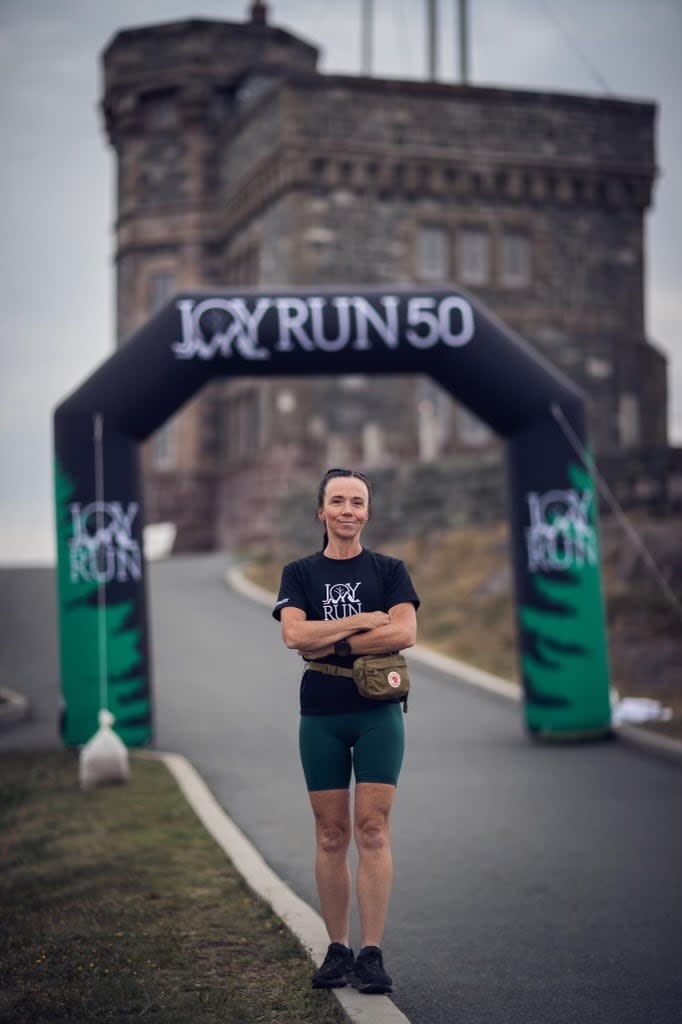

In 2021, Joy created the Joy Run 50 in memory of her brother, Jody, who died by suicide. (Submitted by Evan Foote)
In memory of her brother
In 2021, in honour of her brother, Joy created the Joy Run 50. It’s a gruelling 50-kilometre trail run on Newfoundland’s west coast. This year, the run moved to the east coast of the island, starting at the top of Signal Hill in St. John’s. The event includes relay teams as well as solo runners.
“I want to keep his memory alive and who he was, because the stigma attached to mental health or people who die by suicide is so incorrect and false,” said Joy.
The run has since attracted runners from all over the province and beyond. Participants often share their own mental health stories as their reason for signing up.
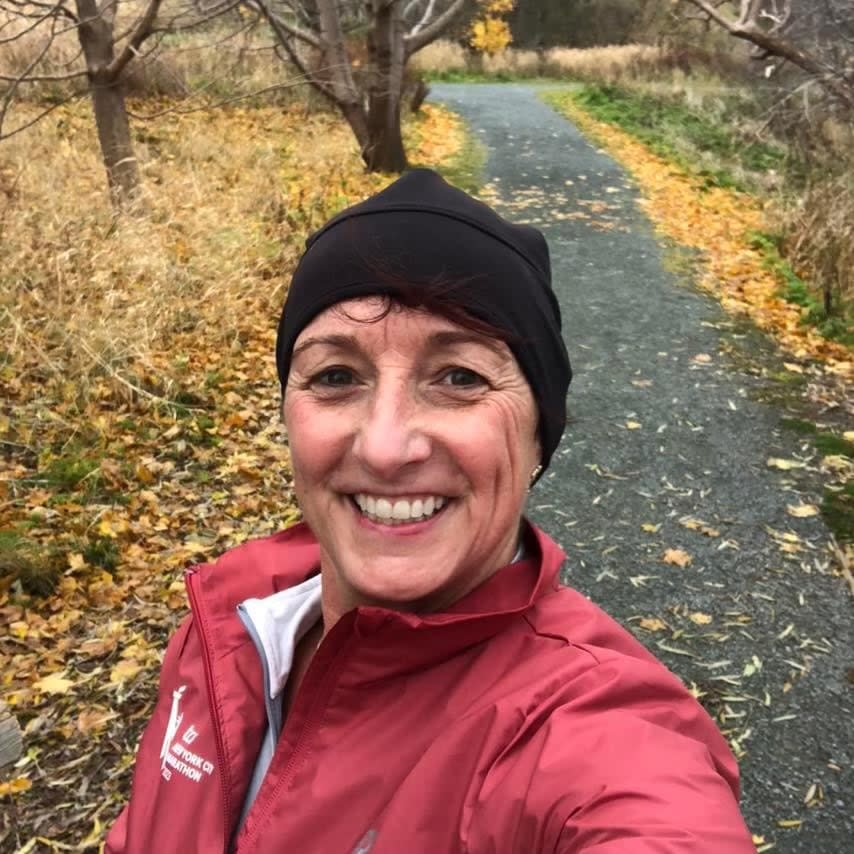

Melinda Saunders uses trail running as a way to cope with post-traumatic stress. She says it’s her way of clearing her head and finding a sense of freedom. (Submitted by Melinda Saunders)
Melinda Saunders was one of the relay runners. Like Joy, Saunders said, she runs as a way to moderate her mental health.
“For me, it’s emotional and it’s freedom,” said Saunders. “It’s like you’re a bird flying. You put everything on the back burner and you just clear your head. It’s just breathtaking.”
About 15 years ago, Saunders was diagnosed with post-traumatic stress disorder. It was a result of a tough childhood growing up in foster care. Her leg of the Joy Run relay took her directly past the home she was taken from as a child.
“A lot of memories there. It was hell, I’m not going to lie,” said Saunders. “It’s your parents, you know, and I was daddy’s little girl, and they were everything, you know? Yeah. It wasn’t pleasant.”
Saunders said she hoped the Joy Run 50 would offer her a sense of closure from the trauma she experienced during her childhood.
“It’s like a full circle. It’s closing the doors and opening new doors for me. But yeah, it’s completion. It’s moving forward,” she said.
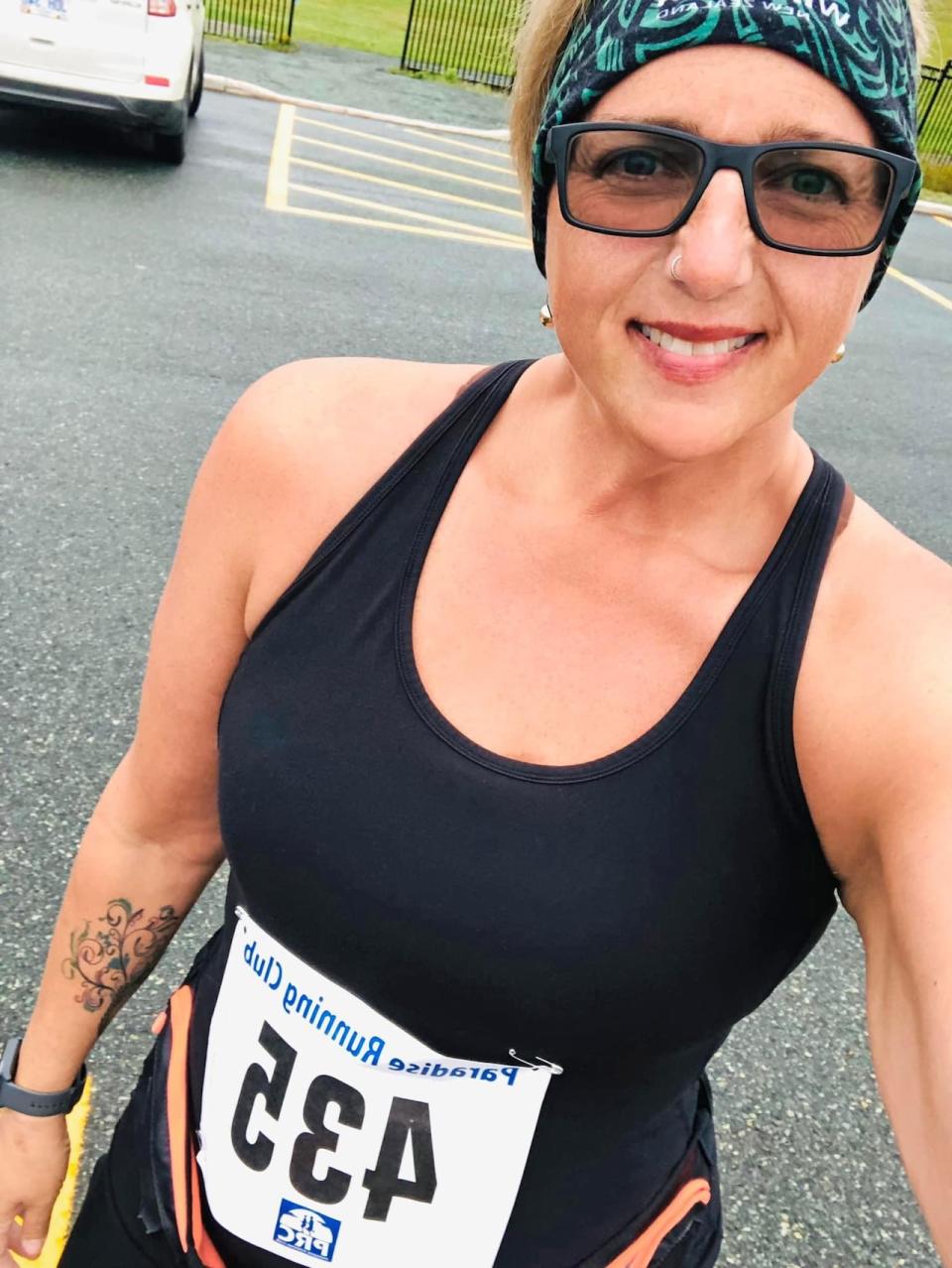

Lisa Carter lost the ability to walk after a serious infection. After years of physical recovery, and working through a deep depression, she is able to run again. (Submitted by Lisa Carter)
Another relay runner was Lisa Carter.
For years, Carter played sports and helped coach her daughter’s teams. That changed in 2013. A serious infection not only took away her ability to walk but very nearly took her life — twice.
Carter said it’s a night she will never forget.
“When the ambulance showed up, I had my family sit me on the front step because I didn’t want to die in my house,” she said. “I knew I was dying. They just kept telling everybody, ‘She got a couple of hours.’ But here I am.”
When Carter eventually returned home from the hospital, she still faced a long road to recovery. She had to learn how to walk again and deal with a host of other conditions that followed.
“Mentally, it was harder than it was physically,” she said. “The depression took hold because I lost my independence as a person. I was trapped in my own home for five or six years. [There were] no bars, but it was prison.”
For Carter, the Joy Run 50 was yet another way to prove her doctors wrong and to keep moving forward, she said.
A setback
Joy worked around the clock in the weeks leading up to the event, making sure every detail was finalized.
The stress took a serious toll on her mental health, she said.
A few weeks before the event she decided to take herself to her doctor for help.
“It just came out of nowhere honestly,” said Joy. “It was almost as intense as when I did attempt suicide in 2007.
“So I know what I need to do. Like there’s so much for me to live for, but this is a part of who I am.”
Joy and her doctor agreed she was well enough to continue with the run.
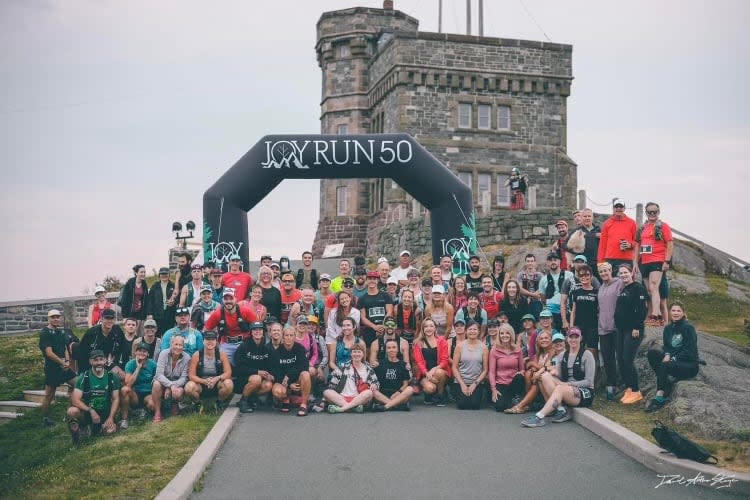

Runners from across the province and beyond met in St. John’s for the Joy Run 50. (Submitted by David Sturge)
The day of the run
The morning of the event was grey and the weather forecast called for rain and high winds. Runners and supporters gathered at the top of Signal Hill in front of the starting line — a large, black inflatable archway with the words Joy Run 50 in stark white.
With an enthusiastic countdown and the swell of bagpipes, the runners began their descent down the hill.
Over the next 50 kilometres, runners followed the East Coast Trail, passing checkpoints along the way. The terrain was challenging and the rain had only made it harder.
By the time runners reached the end of the course, the rain had stopped but the winds were so high volunteers had to take down the finish line for safety.


Joy watches runners wind down Signal Hill at the start of the Joy Run 50. (Submitted by Evan Foote)
Runners were met with music and cheering. The top finishers were given special plaques and everyone got a medal for completing such a challenging course.
For Saunders, completing the run and passing her childhood home in the process was her prize.
“I can’t believe it. I did it. It just brought back memories of the good times there growing up,” she said. “My parents would be proud of me.”
And for Carter, the course was challenging but crossing that finish line was worth it.
“I did fall once because my leg does give out sometimes,” she said. “But yeah, it was fun. I’m pretty damn proud of myself.”
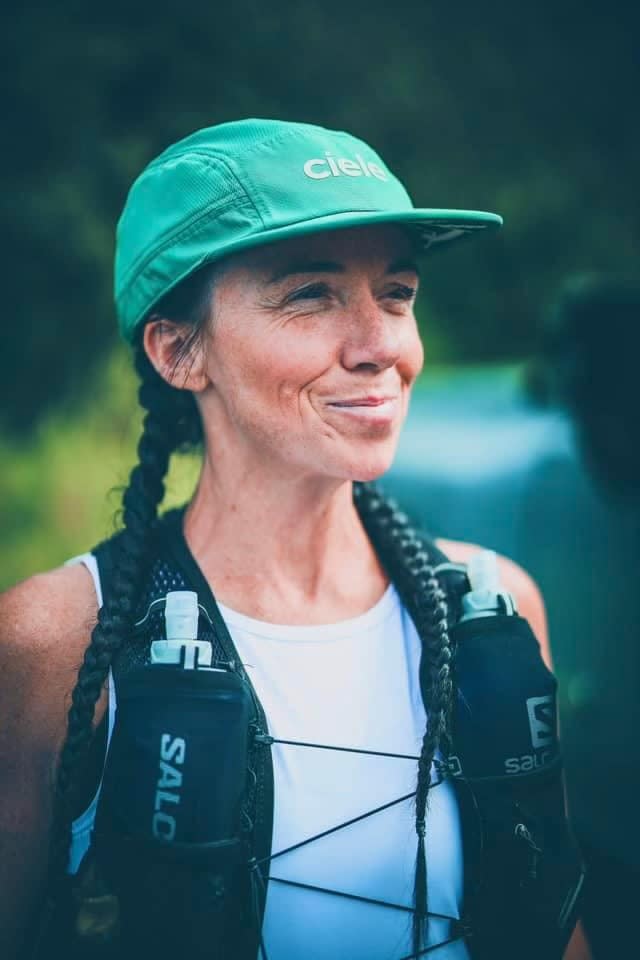

Joy opted to not run this years Joy Run 50 so that she could focus on the other runners. (Submitted by David Sturge)
It was a long day for the runners. Especially for Joy. She took some time to reflect on what her brother would have thought.
“I think he would say, ‘Don’t make a big deal out of me,'” said Joy. “It’s just important to always remember the person you lost to suicide. You should always say their name and keep their memory alive.”
The Joy Run 50 had a definite start and finish line. However, Joy wants people to realize that mental health never follows such a defined course.
“At the end of the day … suicidal ideations don’t disappear for good,” she said.
“The difference with me now is I know I want to be here in this beautiful life and I know what I need to do to work through those thoughts and those feelings. I want people to know that I’m so grateful that I survived.”
If you or someone you know is struggling, here’s where to get help:
Download our free CBC News app to sign up for push alerts for CBC Newfoundland and Labrador. Click here to visit our landing page.

